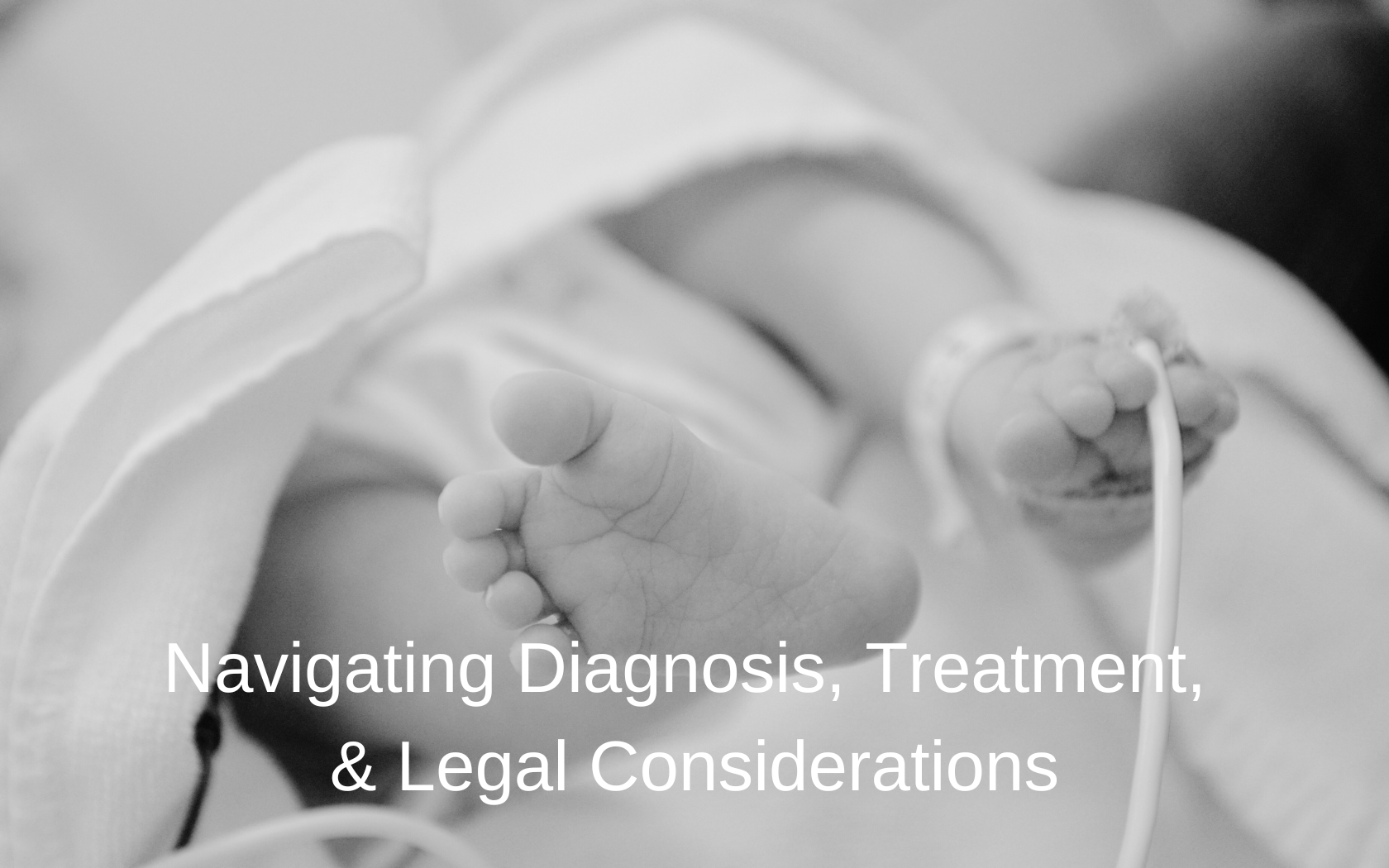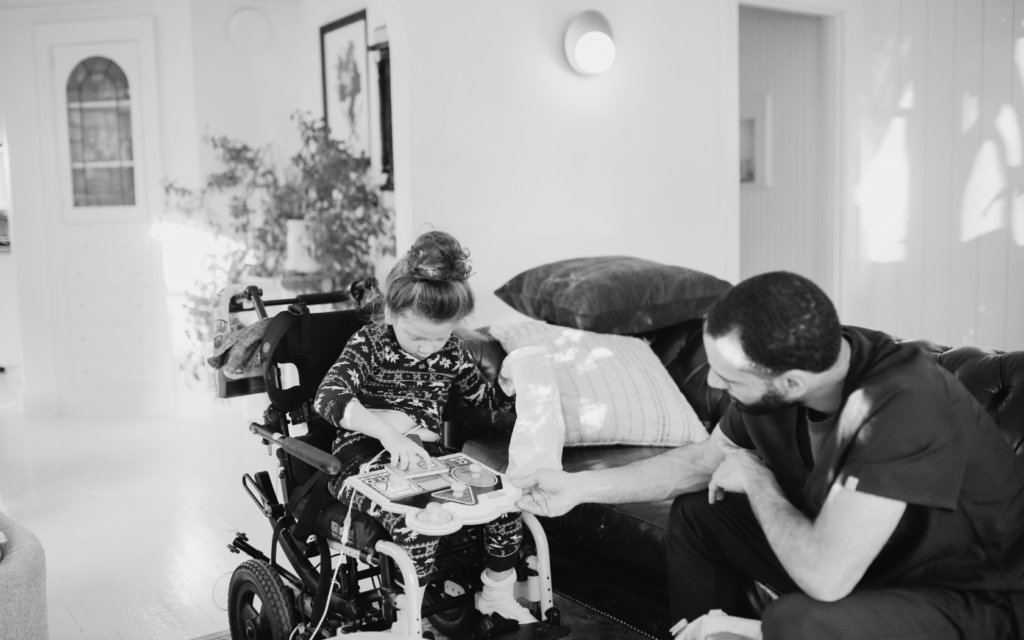Learning your child has severe HIE may take the wind out of your sails. But you’re not alone. There are professionals and support networks ready to help you set your course once again.
The goal of this article isn’t to provide medical advice but to give you a basic understanding of what severe HIE is, what makes it different from other “levels” of HIE, and how some cases of HIE are preventable. If you need legal advice for a negligence-related case of HIE, we’re happy to assist you here.

What is Severe HIE?
HIE stands for Hypoxic-Ischemic Encephalopathy. It’s a serious condition that occurs when there is a lack of oxygen and blood flow to the brain, typically during childbirth. This could happen because of a problem with the umbilical cord or the placenta, an infection, a uterus tear, or another emergency during birth.
Severe HIE refers to a more advanced or critical stage of this condition. It means there’s a significant impact on the baby’s brain function and overall health.
Why are some cases of HIE more severe than others? It depends on several factors, such as:
- The duration of oxygen deprivation
- The degree of oxygen deprivation
- How quickly doctors recognized signs of distress and intervened
- How quickly doctors resuscitated the baby (if needed)
- The gestational age of the baby
- The general health and resilience of the baby
Typically, the longer the baby experiences reduced oxygen supply, the more severe the potential damage to the brain. Also, preterm infants are more vulnerable to the effects of HIE. A full-term baby with robust health is less likely to have severe HIE.
How Do Doctors Assess Severe HIE?
Doctors diagnose the severity of HIE based on several clinical factors.
These may include:
- Apgar Score: An after-birth assessment that evaluates the baby’s heart rate, respiratory effort, muscle tone, reflexes, and color. A low score can indicate potential HIE.
- Clinical Examination: Doctors examine the baby. They look for abnormal muscle tone, reflexes, and responsiveness.
- Blood gas analysis: Analyzing blood gases from the baby’s umbilical cord or blood can tell doctors if oxygen deprivation occurred.
- Imaging studies: MRI and CT scans help doctors identify injuries or abnormalities in the brain.
- Neurological Function Assessments: Doctors might observe the baby’s behavior and responses to stimuli. This helps them assess brain function.
These assessments help doctors classify HIE into mild, moderate, or severe categories. Why is this classification important? It helps determine what the prognosis might be for a baby, and what treatment they need.

Symptoms and Complications of Severe HIE
Right after birth, a severe HIE baby might have these signs and symptoms:
- Unresponsiveness
- Coma
- Poor or no reflexes
- Low muscle tone
- Abnormal eye movements
- Seizures
- Irregular heartbeat
- Hypertension
- Dilated or unresponsive pupils
According to the Florida Neonatal Neurologic Network, 75% or more of severe HIE babies have a severe handicap or die in the newborn stage.
Some of the lifelong complications they may develop include:
- Cognitive impairments
- Developmental delays
- Cerebral palsy
- Visual or hearing impairments
- Learning disabilities
- Seizures
- Feeding difficulties
Treatment for Babies with Severe HIE
Immediate medical interventions and ongoing supportive care are crucial for every severe HIE baby. The outcomes for these children often depend on how quickly doctors respond.
The first “line of defense” for babies with moderate or severe HIE is therapeutic hypothermia. It’s also called “cooling therapy”. Shortly after birth, doctors put the baby on a special mattress that cools their body temperature. The goal is to lower it to about 33.5 degrees Celsius (92.3 degrees Fahrenheit) for 72 hours.
Then, the medical team slowly warms the baby back up. During the entire process, they’ll monitor the baby closely.
Cooling therapy doesn’t reverse damage to the brain. But it can help reduce inflammation and limit further brain damage. Research shows that cooling therapy can lower the risk of long-term disability.
Other treatment methods for severe HIE babies may include:
- Admission to the NICU for close monitoring and specialized care.
- Seizure control medications.
- Mechanical Ventilation if the baby has difficulty breathing.
- Neuroprotective medications like erythropoietin (EPO) and xenon gas
- Ongoing rehabilitation services, such as physical therapy and occupational therapy.

A Doctor’s Mistakes Can Cause HIE
Many cases of HIE can’t be prevented. But others can. Finding out your child has severe HIE is overwhelming enough. But finding out your doctor’s mistake caused your child’s condition? That adds a new level of shock and sadness.
How could this happen? Here are some examples:
- Failing to monitor fetal distress
- Delaying a C-section when it’s necessary
- Mishandling complications such as nuchal cord (cord around the neck)
- Failing to recognize and treat maternal infections
- Improper use of forceps or vacuum extraction during delivery
- Incorrectly inducing or accelerating labor
- Making mistakes while administering anesthesia
- Mismanagement of a high-risk pregnancy
- Failing to resuscitate a severe HIE baby
If you believe a doctor’s error caused your child’s HIE, contact our birth injury lawyers. We’ve recovered millions for families of children with severe HIE, and are prepared to do the same for yours.
Severe HIE FAQ’s
Research shows that the mortality rate for babies with severe HIE is 25-50%. That means at least half of infants born with this condition survive. However, most babies that survive severe HIE develop lifelong impairments. The most common conditions severe HIE infants have include:
– Cerebral palsy
– Seizure disorders
– Intellectual disabilities
– Visual impairments
– Hearing loss
– Speech and language disorders
– Behavioral and Emotional Challenges
– Trouble feeding and swallowing
Early intervention is key to helping babies with severe HIE survive and thrive. For example, therapeutic hypothermia can help prevent further damage. This treatment has been shown to save lives in cases of babies with severe HIE. It can also improve their prognosis.
The definition of “normal” is subjective. So one person’s understanding of normal could be different from another’s. But if we take it to mean living independently and without disabilities, that is possible for some babies with severe HIE. It’s more likely to be possible when a baby receives treatment for HIE right after birth, and the treatment turns out to be effective.
Some other factors influence whether a child with severe HIE will be able to live a “normal” life. They include:
– The extent and location of their brain injury
– Availability of ongoing supportive care and resources
– The baby’s genetics and resilience
The main cause of HIE is a decrease in oxygen due to complications during labor and delivery. The most common complications that can lead to HIE are:
– Prolonged labor
– Umbilical cord problems such as umbilical cord compression or prolapse
– Placental abnormalities
– Maternal hypertension
– Maternal infections.
The complications above can all contribute to reduced oxygen delivery to the baby’s brain. Also, events such as placental abruption, where the placenta separates from the uterine wall prematurely, or conditions that affect the mother’s ability to deliver oxygen to the baby, such as maternal hypotension or respiratory issues, can also lead to HIE.




